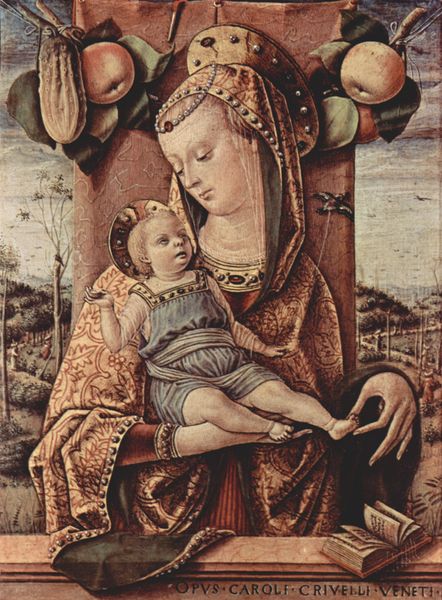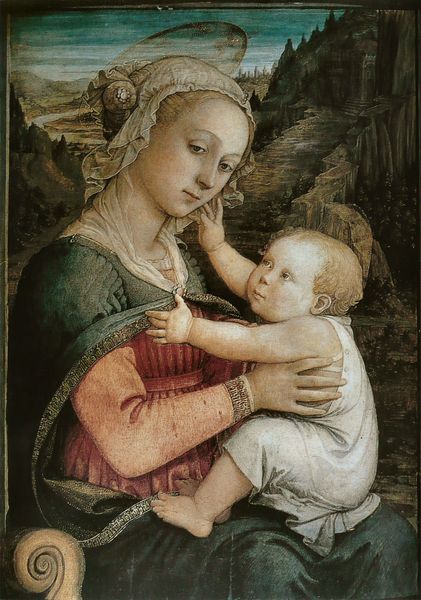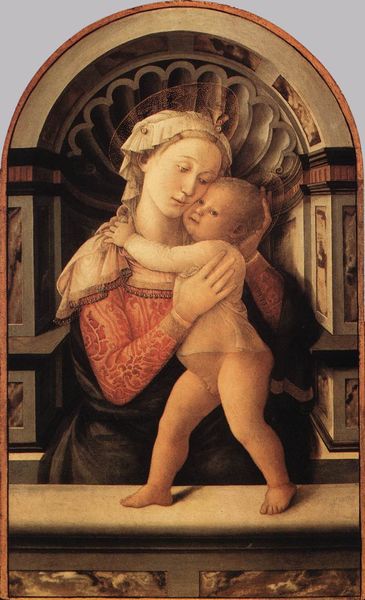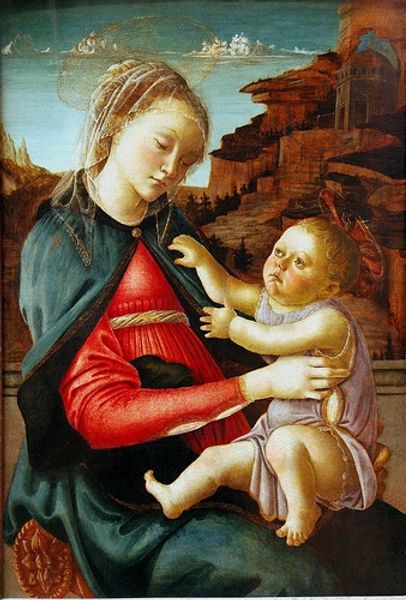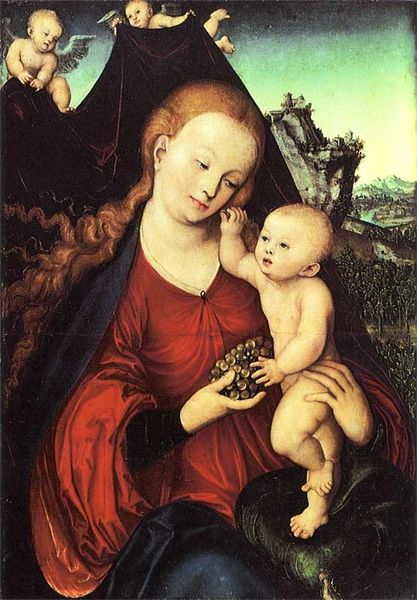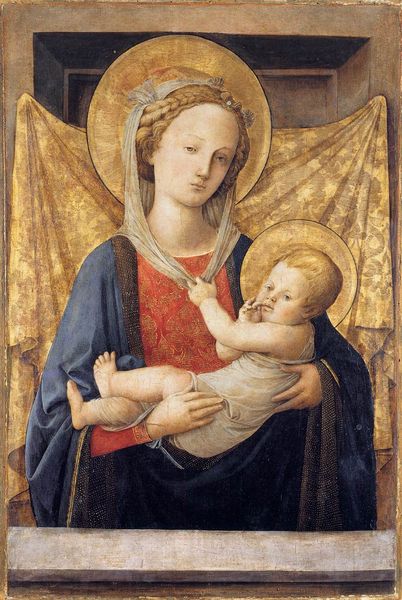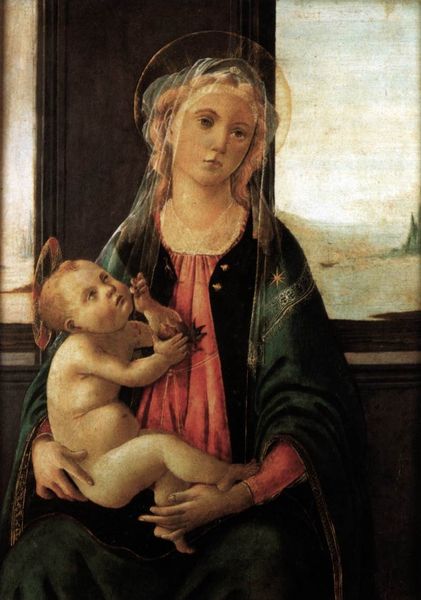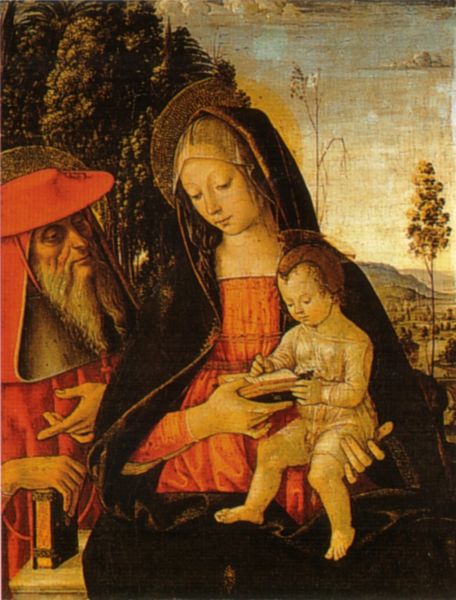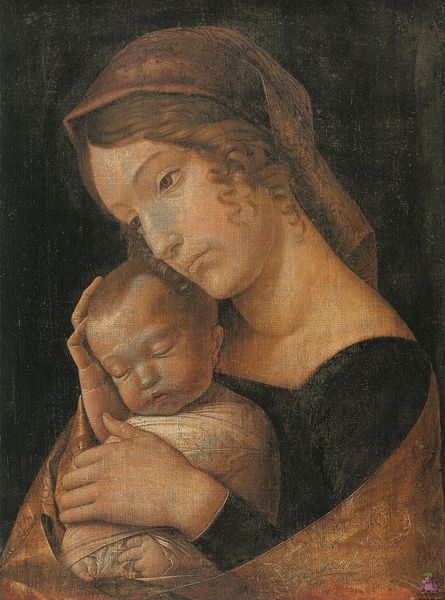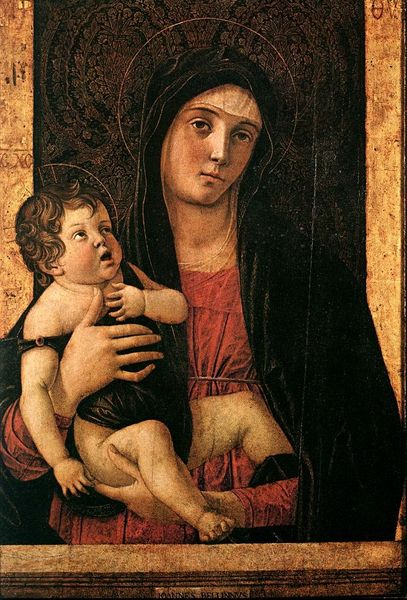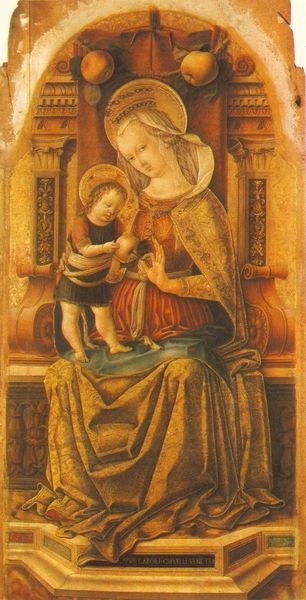
tempera, oil-paint
#
portrait
#
tempera
#
oil-paint
#
figuration
#
oil painting
#
christianity
#
italian-renaissance
#
early-renaissance
#
mixed media
#
virgin-mary
#
watercolor
Dimensions: 49 x 34 cm
Copyright: Public domain
Editor: So, here we have Carlo Crivelli's "Virgin and Child," from about 1480, oil and tempera on panel. The Virgin's gaze feels heavy, almost mournful, which seems intense for what's typically a very gentle image. What strikes you most when you look at it? Curator: It’s funny you pick up on the Virgin's gaze, because to me, Crivelli’s work is always a fascinating dance between immense tenderness and, yes, a sort of premonitory melancholy. He uses these exquisitely rich details—the fruit, the jewels, even the almost sculptural folds of the Virgin's robes—to create a sense of tangible beauty. But there's also a stillness, isn't there? Like the calm before a storm. Do you feel that tension between opulence and… something else? Editor: I do see that now, actually. The fruit almost looks too perfect, too still. How does knowing it’s from the Early Renaissance period affect our interpretation? Curator: Knowing its Early Renaissance, we see it's part of a shift—artists beginning to explore depth and realism, but still rooted in symbolism. That fruit isn’t just decoration. Can you think of what that fruit, those perfect spheres, might symbolize in a religious context? Editor: Hmmm, perhaps a subtle nod to the forbidden fruit and the future suffering of Christ? Curator: Exactly! Crivelli cleverly embeds those future sorrows in what seems like a peaceful domestic scene. The way he blends the sacred and the tangible always gets me. I mean, it’s heavy stuff when you remember the stories it tells. It speaks of burdens carried by mothers and the price of faith, doesn’t it? Editor: I agree. Looking at it again, it’s far more than just a pretty picture; it’s loaded with a really profound emotion.
Comments
No comments
Be the first to comment and join the conversation on the ultimate creative platform.
